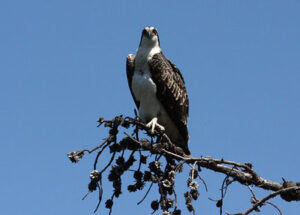Soundscape Health & Quiet Parks International
by Maxwell A. Smith
I began making field recordings during my senior year of college. I set out on hikes with my handheld recorder and captured sounds like the spring dawn chorus in Badlands National Park and old lodgepole pines creaking in the fierce winds of Yellowstone.
During this trip, I fell in love with recording the quiet and pristine soundscapes of our national parks. However, this trip also made me hyper-aware of how hard it is to find truly quiet places, absent of human noise. From air traffic to cars, boats, farming, or logging, it is nearly impossible to find truly quiet places without traveling into the remote wilderness.
Gordon Hempton elaborates on the challenges of preserving natural soundscapes through his project, One Square Inch of Silence. The tall, jagged peaks of the Olympic mountains help preserve the natural quiet of the Hoh Rain Forest, as it’s fairly inaccessible to cars and motorcycles.
However, even in a remote place like the Hoh Rain Forest, true quiet can be hard to come by. A few years ago, the US Navy received permission to conduct flight training exercises over the Olympic peninsula with their “Growler” planes, some of the loudest aircraft in the world. And as recently as 2020, the US Navy announced they would be increasing test flights over the park.
While it is incredibly discouraging to hear a Growler roar overhead as you hike in the old-growth rainforest, there is some reason for optimism. Quiet Parks International (QPI) is a non-profit dedicated to preserving truly natural quiet. Through research and education, QPI is helping to spread awareness of soundscape preservation efforts, and the importance of reducing noise pollution in natural areas for the greater good of ALL life on earth (both humans and wildlife benefit from reduced noise pollution).
The next time you are on a hike, I encourage you to find a quiet spot and close your eyes for one minute and listen. And really listen! Paint a picture in your mind of your surroundings based on what you hear. Locate things spatially with your ears and try to distinguish all the different sounds you hear. This simple exercise will make you more aware of the soundscape you live in every day and how it might affect your health.
Instead of taking a picture with your phone, try making an audio recording to listen to later when you’re home. You’ll find that sound can really transport you and create stronger memory links than a 2D picture on your phone. When you think about it, your eyes only show you what you’re looking at during a given moment. But your ears provide you a 360 image of what’s happening around you in an instant!
Thank you for reading and for considering the importance of sound to life on earth!
